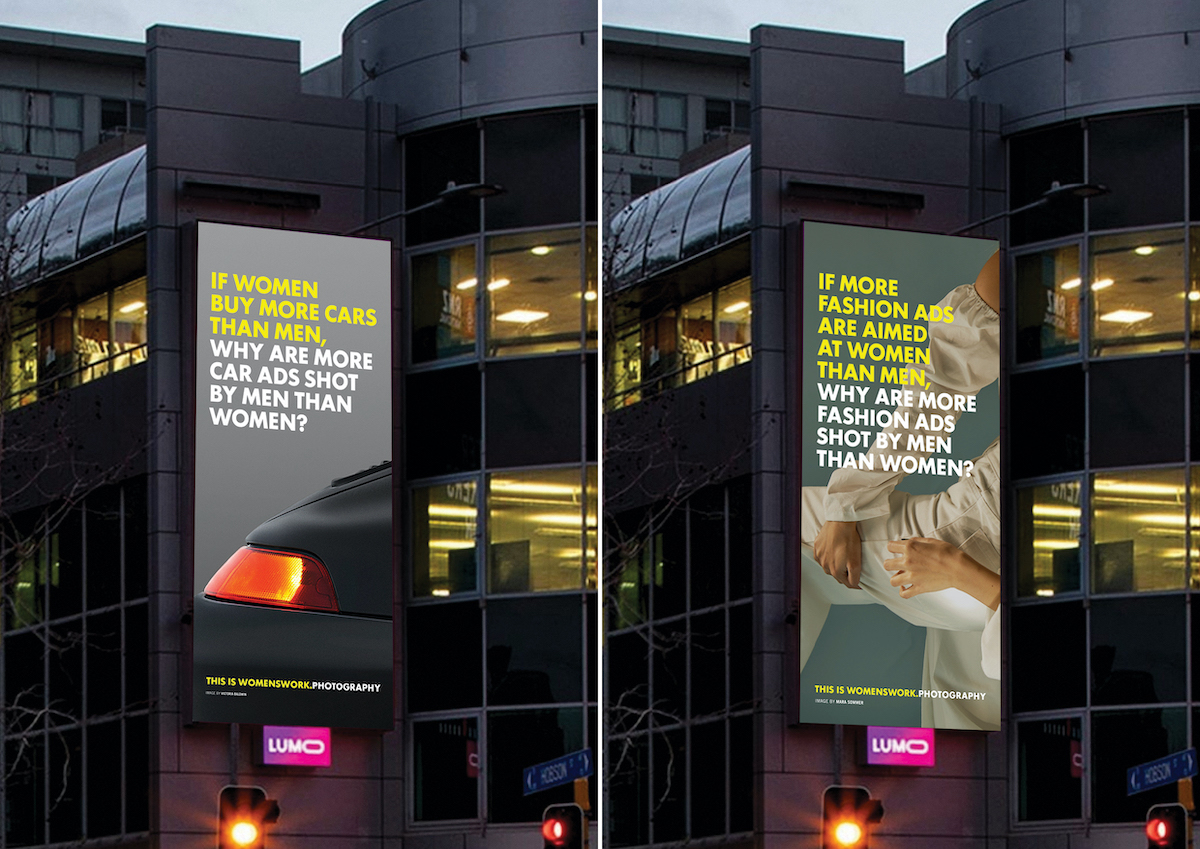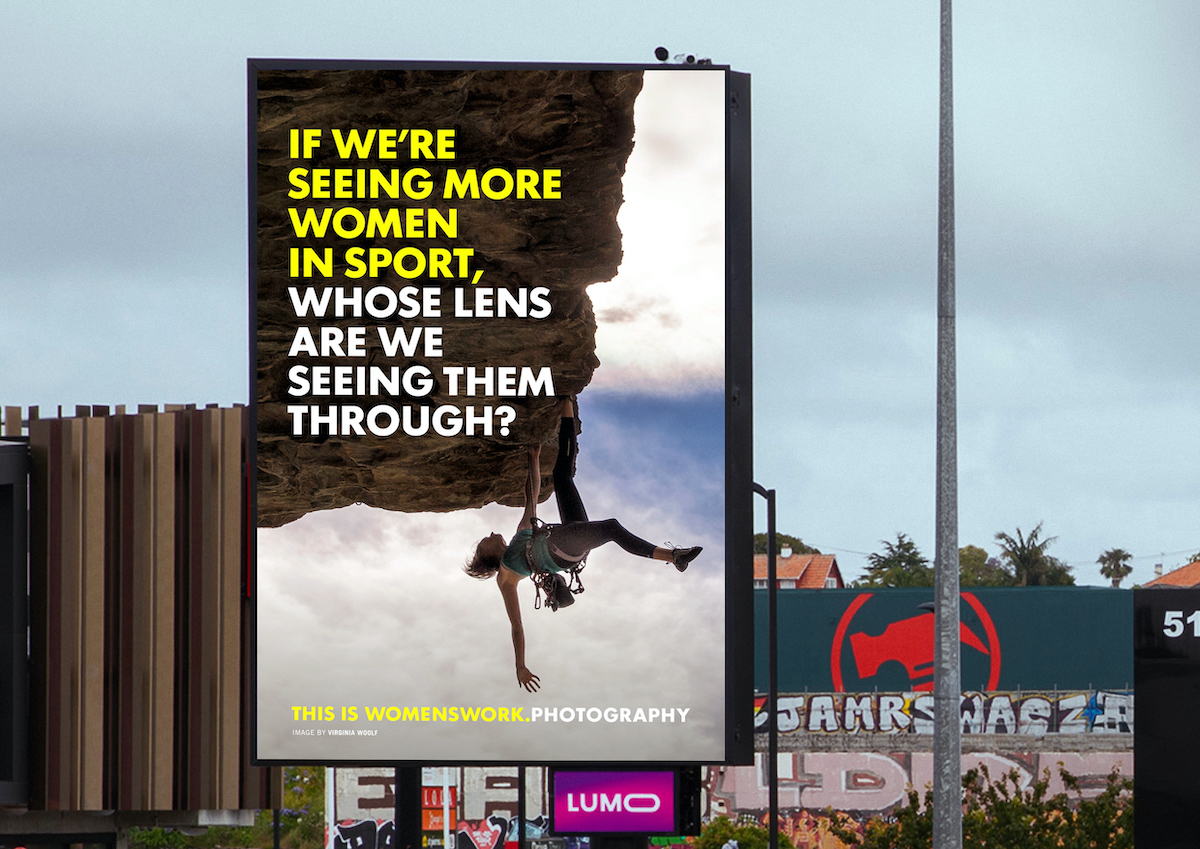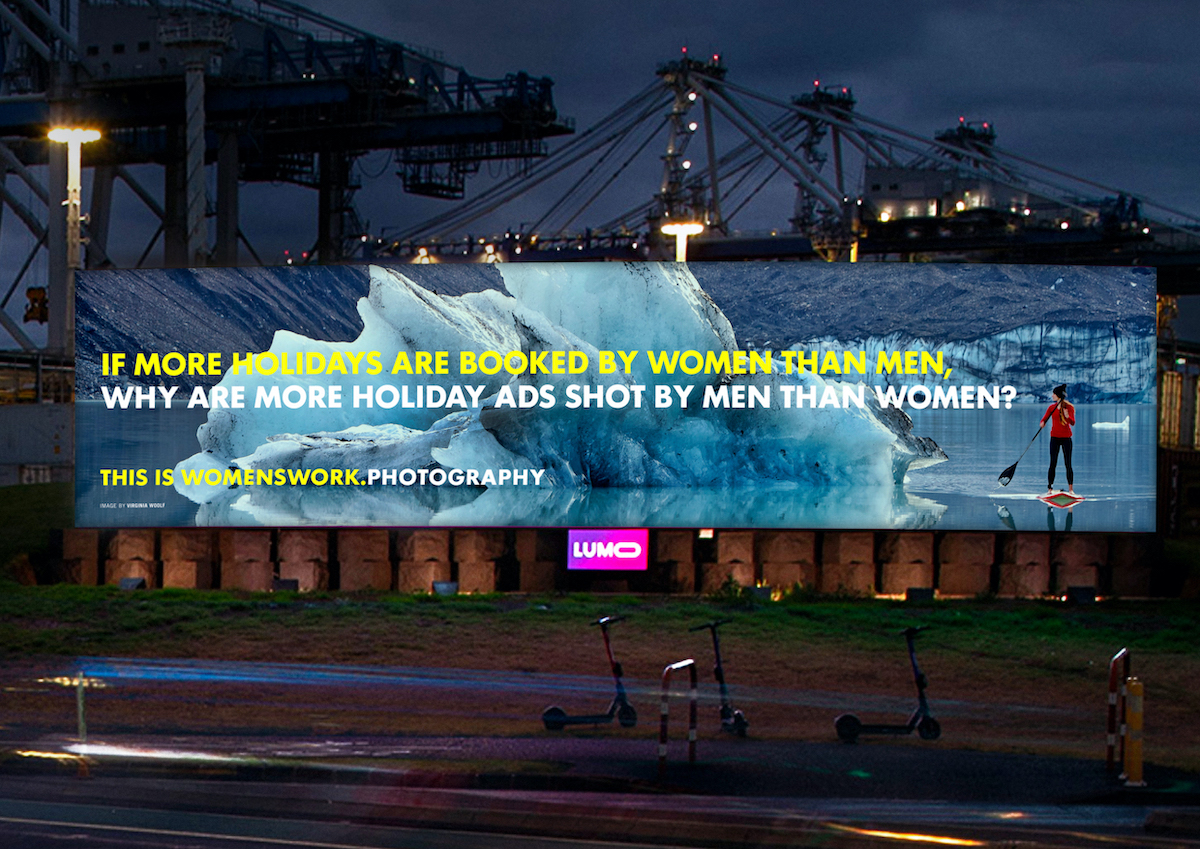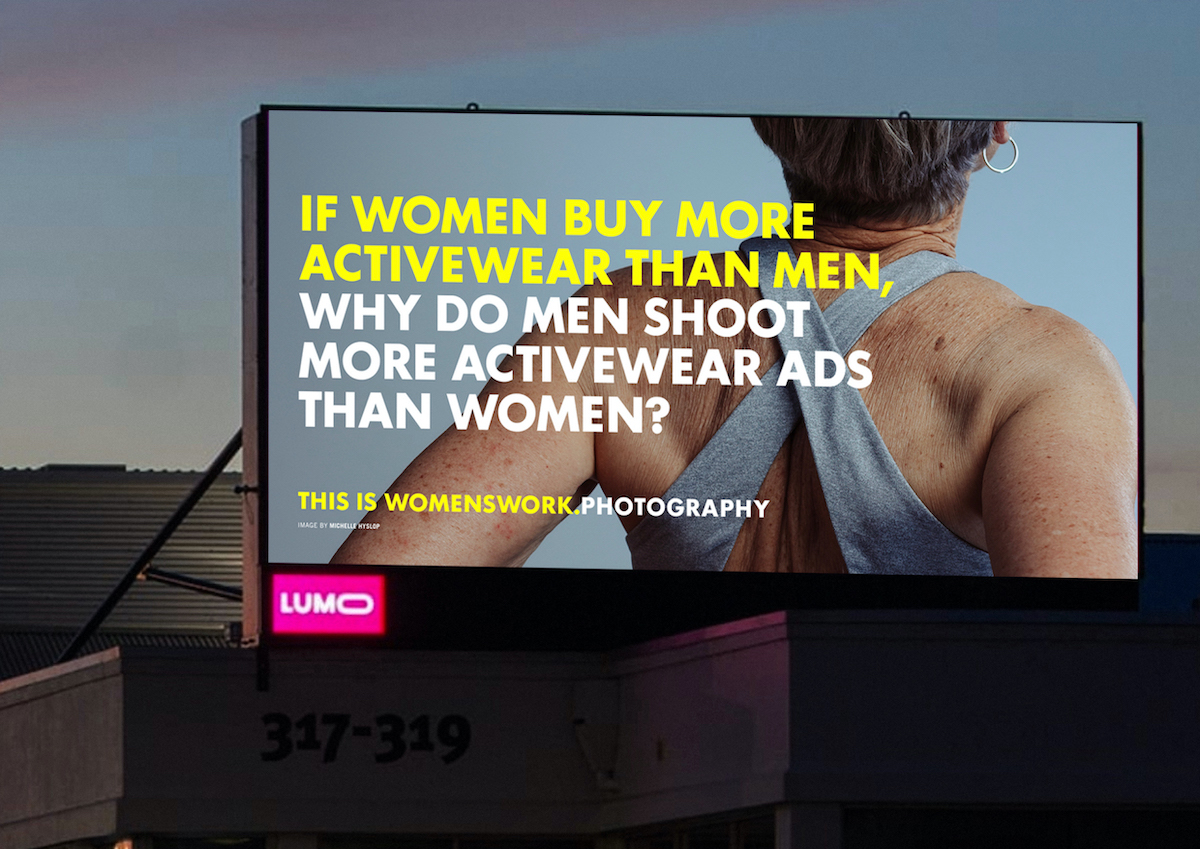Ogilvy NZ and Lumo puts Women’s Work where it belongs this International Women’s Day

To mark International Women’s Day, Ogilvy New Zealand in partnership with Lumo have launched a campaign and exhibition to put Women’s Work where it belongs – in commercial ad space.
The campaign is running in high impact Lumo outdoor sites throughout Auckland and Wellington, alongside a ‘Women’s Work’ exhibition which is showing at the Ellen Melville Centre until the 12th of March. Women’s Work is a collective of female and non-binary professional photographers who are working hard to increase representation across the industry, and to level the playing field for commercial opportunities.
The ads in the campaign will showcase the talent of the ‘Women’s Work’ collective in categories still dominated by male photographers, and ask the advertising industry to have a good hard think about the inequity in the statistics.
Says Kristal Knight, executive creative director at Ogilvy NZ: “Women influence over 85% of consumer goods purchases. Across many categories, women are the primary targets and the biggest spenders. But the proportion of advertising imagery shot by women is still less than 20%. With this year’s International Women’s Day theme being ‘Embrace Equity’, it’s a fitting moment to pose the question to the advertising industry – why?
“It’s incredible to think how much money the industry aims to make from selling to women, without giving them an equal opportunity to earn it by shooting the ads. I know from my own experience of being art director for 20 odd years that this probably comes from unconscious bias – of typecasting the work of photographers, making selections based on what the photographer has done in the past, not by what they are capable of doing. So some categories have become more male dominated, like car photography for example, and it’s become harder and harder for women to get a foot in the door to these jobs. We wanted to challenge the industry to take a moment and think about the role we play in these stats.”
Says Victoria Baldwin, founder of Women’s Work: “Equality means each individual or group of people is given the same resources or opportunities. But equity recognizes that each person has different circumstances and allocates the exact resources and opportunities needed to reach an equal outcome. Which is why it’s so important we use International Women’s Day as a platform to help get female photographers the exposure they need for a level playing field. The support of Ogilvy and Lumo will help us make some much-needed noise.”



Ogilvy NZ
CEO: Kelly-Ann Maxwell
Managing Partner: Megan Clark Cook
Executive Creative Director: Kristal Knight
Senior Art Director: Glenn Chapman
Senior Art Director: Diana Winter
Resource Manager: Ellie Walker-Huizing
Studio: Ian Wood
Women’s Work
Founder/Producer: Briar Pacey
Founder/Photographer ‘Car ads’: Victoria Baldwin
Photographer ‘Fashion’: Mara Sommer
Photographer ‘Activewear’: Michelle Hyslop
Photographer ‘Women in sport (beam)’: Sacha Stejko
Photographer ‘Women in sport (rock climber) / ‘Holidays’: Virginia Woolf
Lumo:
Chief Marketing Officer: Hamish Smith
GM – Programmatic: Jack Plowright

9 Comments
Now what?
The main criteria should always be, are they the right person for the job.
These are just promoting, are we as a brand going to look better because we used a a woman to photograph our Campaign.
Reality check, this is Political Correctness in the Boardroom deflecting the real issues, by making it about someone else. Making a political statement about what is essentially a freelance career, is just absurd, sort your own hose out first.
Oh and let’s not touch on Class privilege, that might rock the Boardroom.
The goal should be I want to be considered for work because I’m a good photographer, not because I’m a woman.
If you are going to go down this track and exploit women for political correctness, pay them accordingly, pay them an endorsement fee.
A campaign championing female photographers would be much better if the images were stunning or at very least be good photographs, these are in the near enough is good enough category. Apart from the rock climber that’s not a bad image.
“of typecasting the work of photographers, making selections based on what the photographer has done in the past”
Yes, that feels fair, because that is how you know if someone is good enough to bring the idea to life. Gender, race or anything else shouldn’t come into it.
And BTW the most successful and highest paid photographer in the world happens to be a woman, Annie Leibovitz. Why, because she is great at what she does and has worked really hard to get where she is, and more power to her.
The world needs more Annie’s and less of this.
Maybe a woman art director would have applied the basic principles for successful OOH communication?
Also feels like the actual photographers’ names were an afterthought – a minimised caveat on a self-congratulatory piece of confusion. How ironic.
Design not considered, idea lacking. Speaks for itself…
As a female photographer, I find this quite offensive.
This does nothing to advance women. It fuels resentment and advances a negative rhetoric. “she only got the job because she is a woman”.
I would like to think I’m hired because clients see a value in what I do, because my work speaks for itself and not gain extra consideration for a commission based on my gender.
That type of positioning is not ok with me.
I don’t even have the words anymore.
Who signed off on this ‘art direction’? They look like concept mocks.
Holy shit that was well said.
You articulated it perfectly. Thank you.